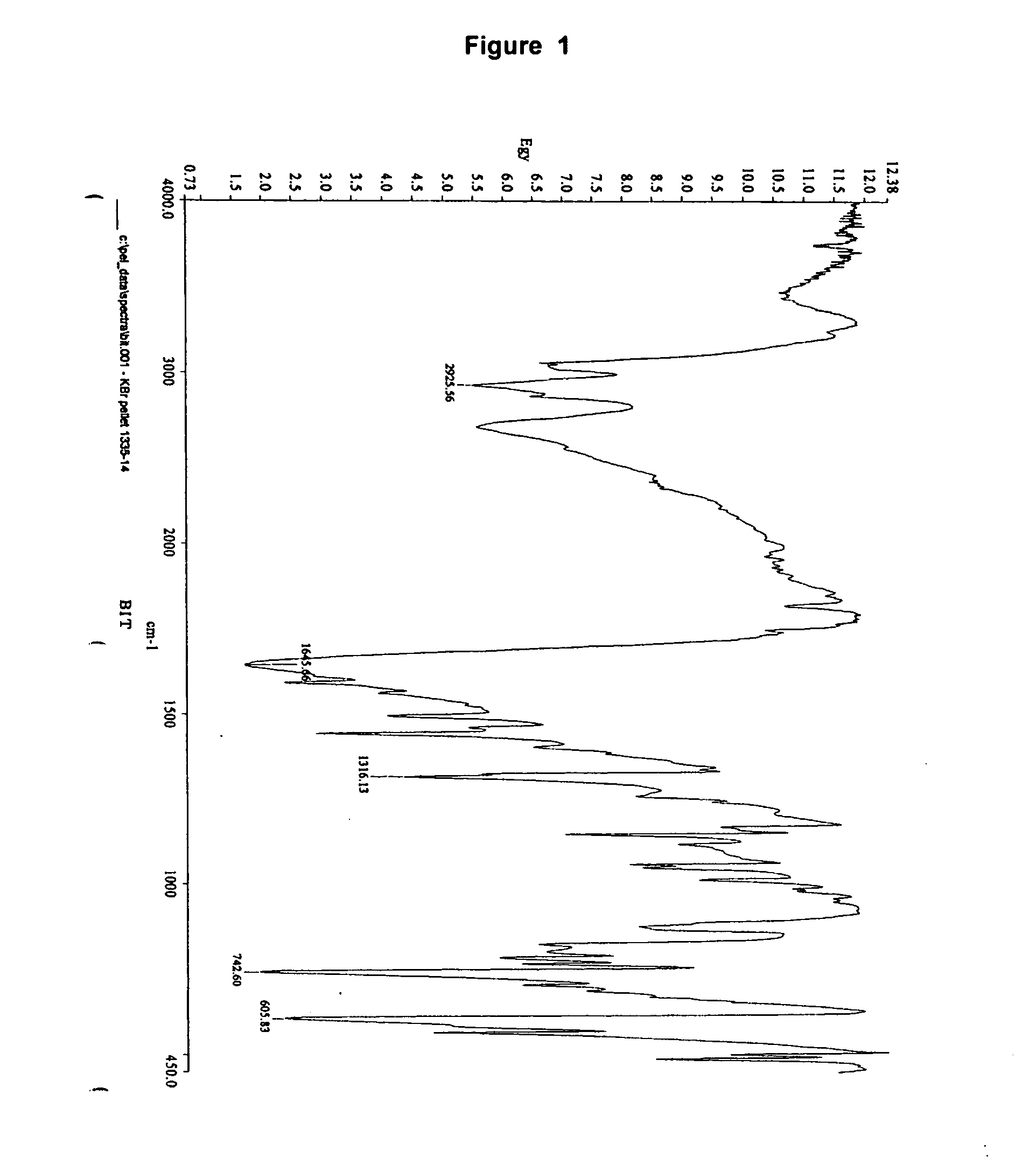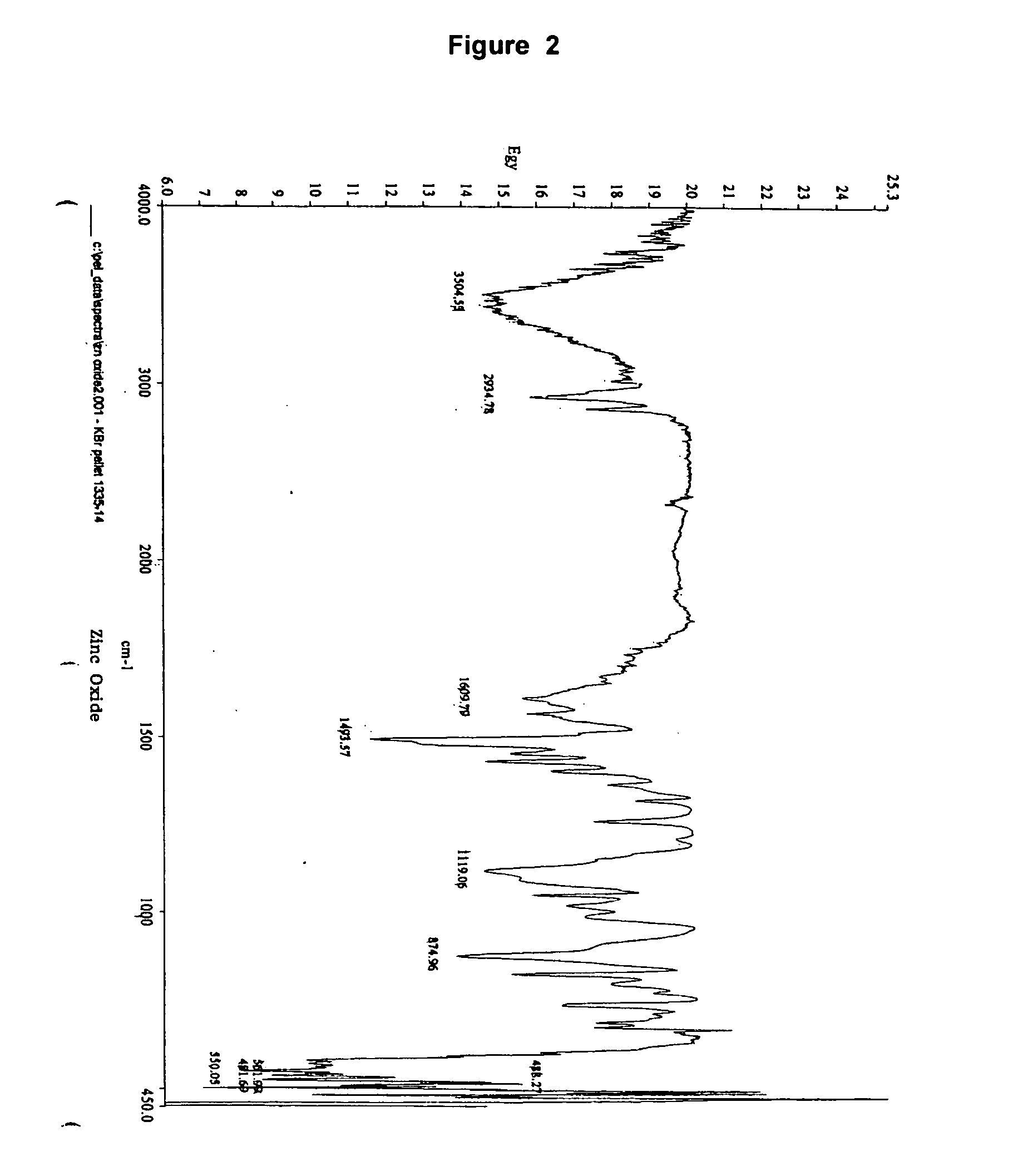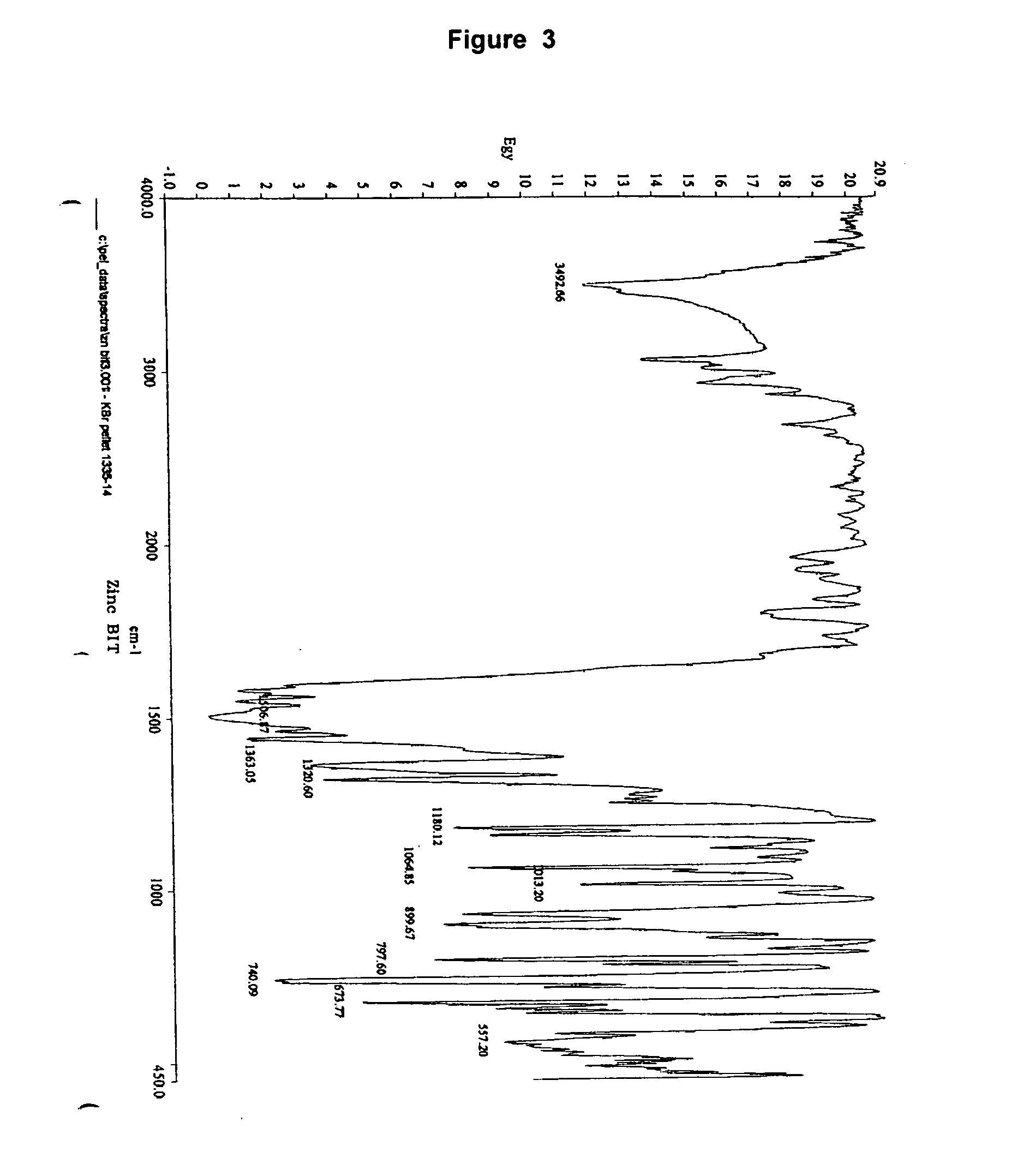Immobilized 1,2-benzisothiazolin-3-one
a technology of benzisothiazolin and immobilized benzisothiazolin, which is applied in the field of antimicrobial immobilization 1, 2benzisothiazolin3one/zinc oxide complex, can solve the problems of inconvenient use, inconvenient use, and inability to meet the requirements of use, so as to reduce the level of bacteria
- Summary
- Abstract
- Description
- Claims
- Application Information
AI Technical Summary
Benefits of technology
Problems solved by technology
Method used
Image
Examples
example 1
Comparative Example
bis-(1,2-Benzisothiazolin-3-one)zinc(II)chloride
[0046] Bis-(1,2-benzisothiazolin-3-one)zinc(II)chloride was prepared according to example 53 of U.S. Pat. No. 4,150,026.
[0047] 1.5 g of 1,2-benzisothiazolin-3-one (analytical pure grade) was dissolved in 75 ml of absolute methanol. A quantity of 0.68 g zinc chloride was added to provide a clear solution. The solvent was then evaporated under vacuum and the residue was dried. A quantity of 2.1 g of bis-(1,2-benzisothiazolin-3-one)zinc(II)chloride was obtained. The molar ratio of BIT:Zn=2:1.
[0048] The 1,2-benzisothiazolin-3-one was not immobilized as a bis-(1,2-benzisothiazolin-3-one)zinc(II)chloride salt complex because the complex is almost completely soluble in methanol. HPLC analysis showed that 63% of the salt complex was 1,2-benzisothiazolin-3-one obtained from the methanol extract.
example 2
Dispersion Concentrate of BIT / ZnO from BIT-Potassium Salt
[0049] A quantity of 300 g of tap water was admixed with 26.7 g of potassium hydroxide prills and 74.1 g of commercially available 1,2-benzisothiazolin-3-one (90%) (available from Aldrich) until a clear solution resulted. A quantity of 270 g of tap water, 40 g of Emulsogen TS 200 (a dispersing agent available from Clariant), 40 g of Atlox® 4913 (a non-ionic dispersant available from Unigema), 155.7 g of zinc oxide (available from Aldrich), and 30.1 g of zinc chloride (available from Aldrich) were then added and the batch was milled in a pearl mill. The foam was controlled by adding 0.5 g of Rhodorsil 416 (a silicon based defoamer available from Rhodia). The pH was 7. The mixture was passed 3 times through a pearl mill to reduce the particle size. The product was adjusted to a viscosity of 420 mPas (Spindle 4, Brookfield) by addition and dispersion of 4 g xanthan gum (Keizan®) and 59 g of tap water. The ZnO:BIT weight / weight r...
example 3
Dispersion Concentrate of BIT / ZnO from BIT-ZnCl2
[0051] A quantity of 90 g of tap water was mixed with 22.2 g of commercially available 1,2-benzisothiazolin-3-one (90%), 12 g of Emulsogen TS 200, 12 g of Atlox® 4913, 46.7 g of zinc oxide, and 9.0 g of zinc chloride. The batch was neutralized to pH 8.5 by slow addition with stirring of 16 g of a 50% (w / w) potassium hydroxide solution. The batch was passed 3 times through a pearl mill to reduce the particle size. Foam was controlled by adding 0.5 g of Rhodorsil 416. The product was then adjusted to a viscosity of 720 mPas (Spindle 3, Brookfield, 100 rpm) by addition and dispersion of 1.6 g of xanthan gum and 121 g of tap water. The ZnO:BIT weight / weight ratio=2.6:1 and the molar ratio BIT:Zn=0.20.
[0052] A quantity of 400 g of a dispersion concentrate of (1,2-benzisothiazolin-3-one)zinc oxide was obtained. Particle size distribution: 0.8 micrometer 50% / 3.5 micrometer 95%. Analysis: 6.7% total 1,2-benzisothiazolin-3-one by HPLC after a...
PUM
| Property | Measurement | Unit |
|---|---|---|
| Length | aaaaa | aaaaa |
| Fraction | aaaaa | aaaaa |
| Fraction | aaaaa | aaaaa |
Abstract
Description
Claims
Application Information
 Login to View More
Login to View More - R&D
- Intellectual Property
- Life Sciences
- Materials
- Tech Scout
- Unparalleled Data Quality
- Higher Quality Content
- 60% Fewer Hallucinations
Browse by: Latest US Patents, China's latest patents, Technical Efficacy Thesaurus, Application Domain, Technology Topic, Popular Technical Reports.
© 2025 PatSnap. All rights reserved.Legal|Privacy policy|Modern Slavery Act Transparency Statement|Sitemap|About US| Contact US: help@patsnap.com



